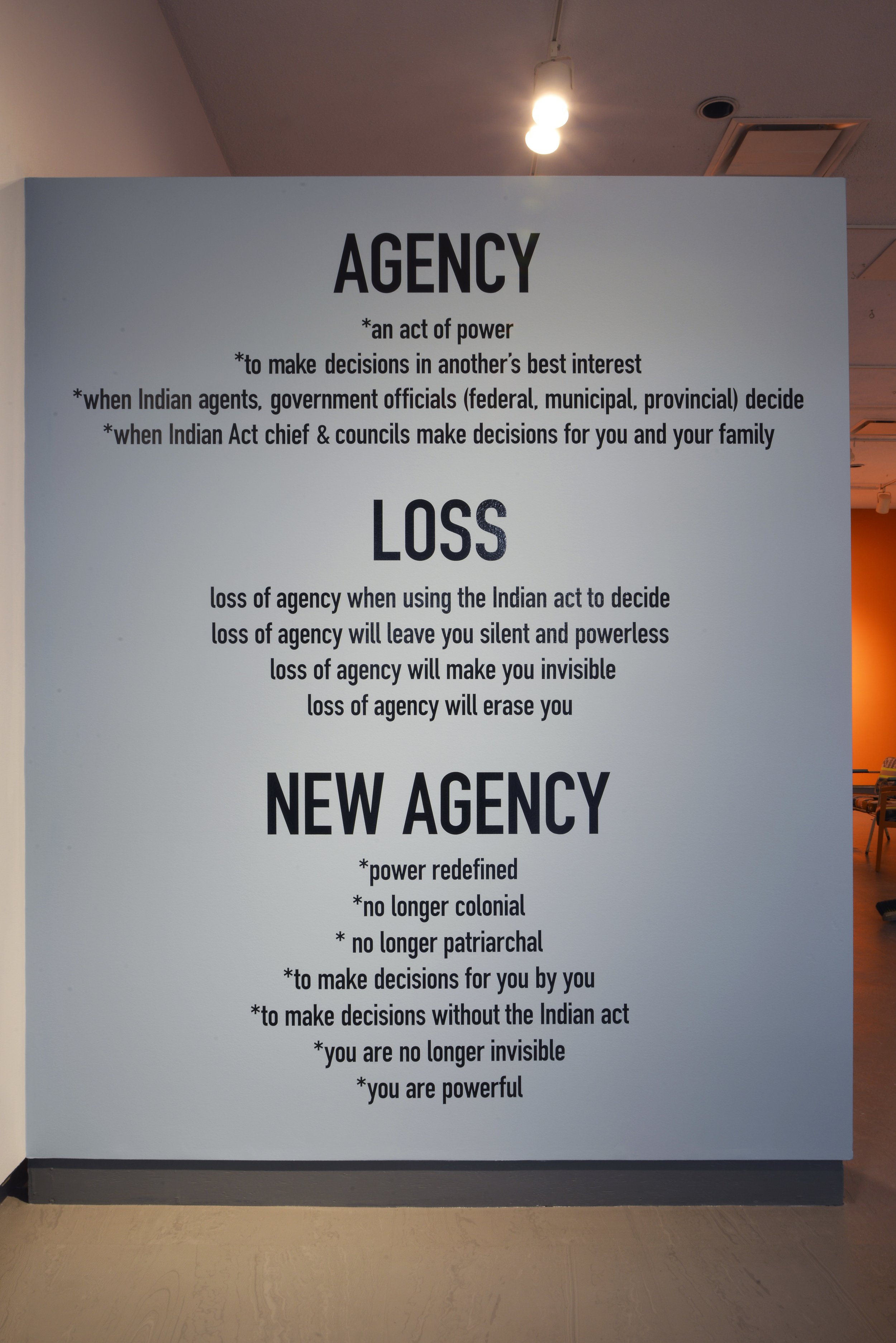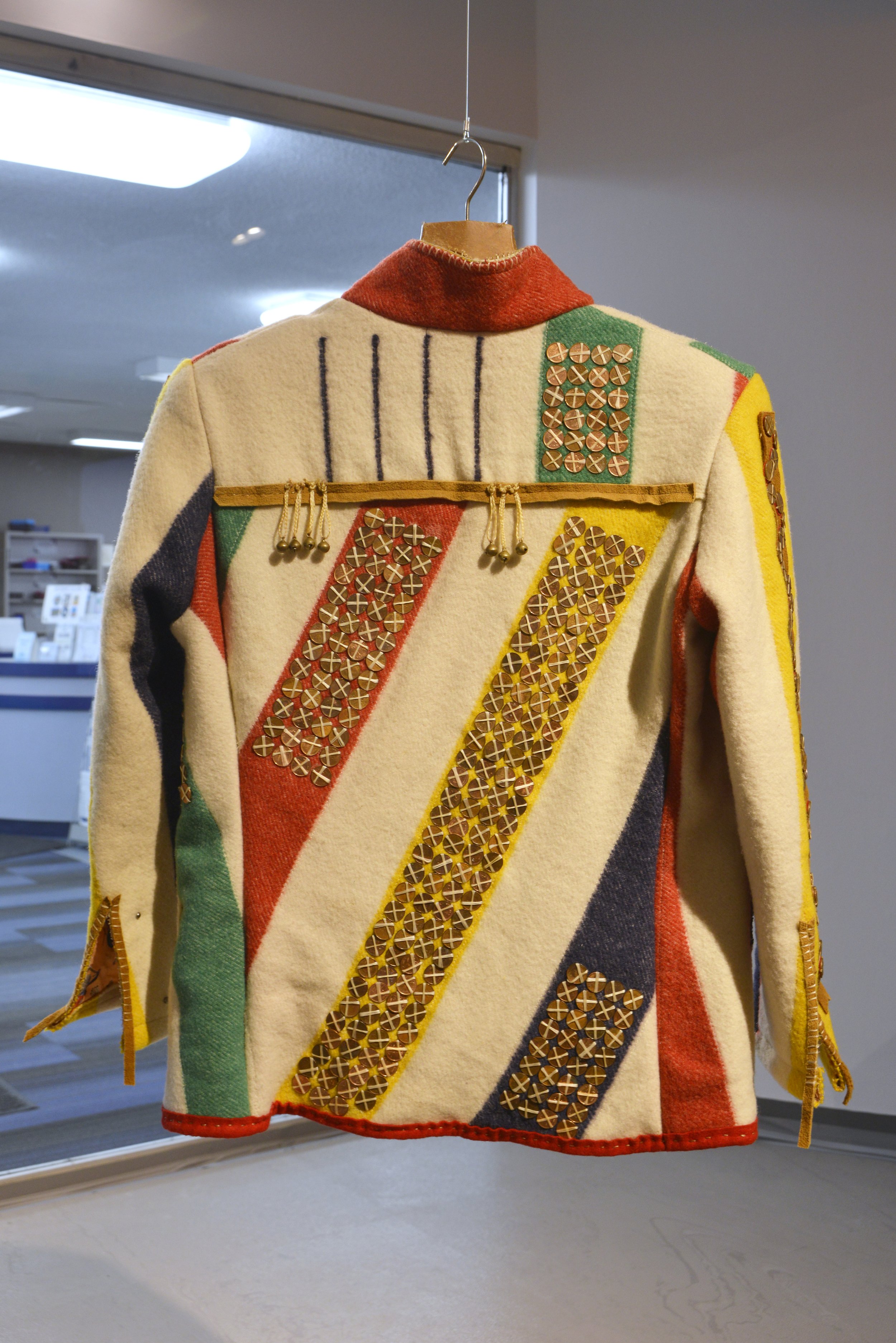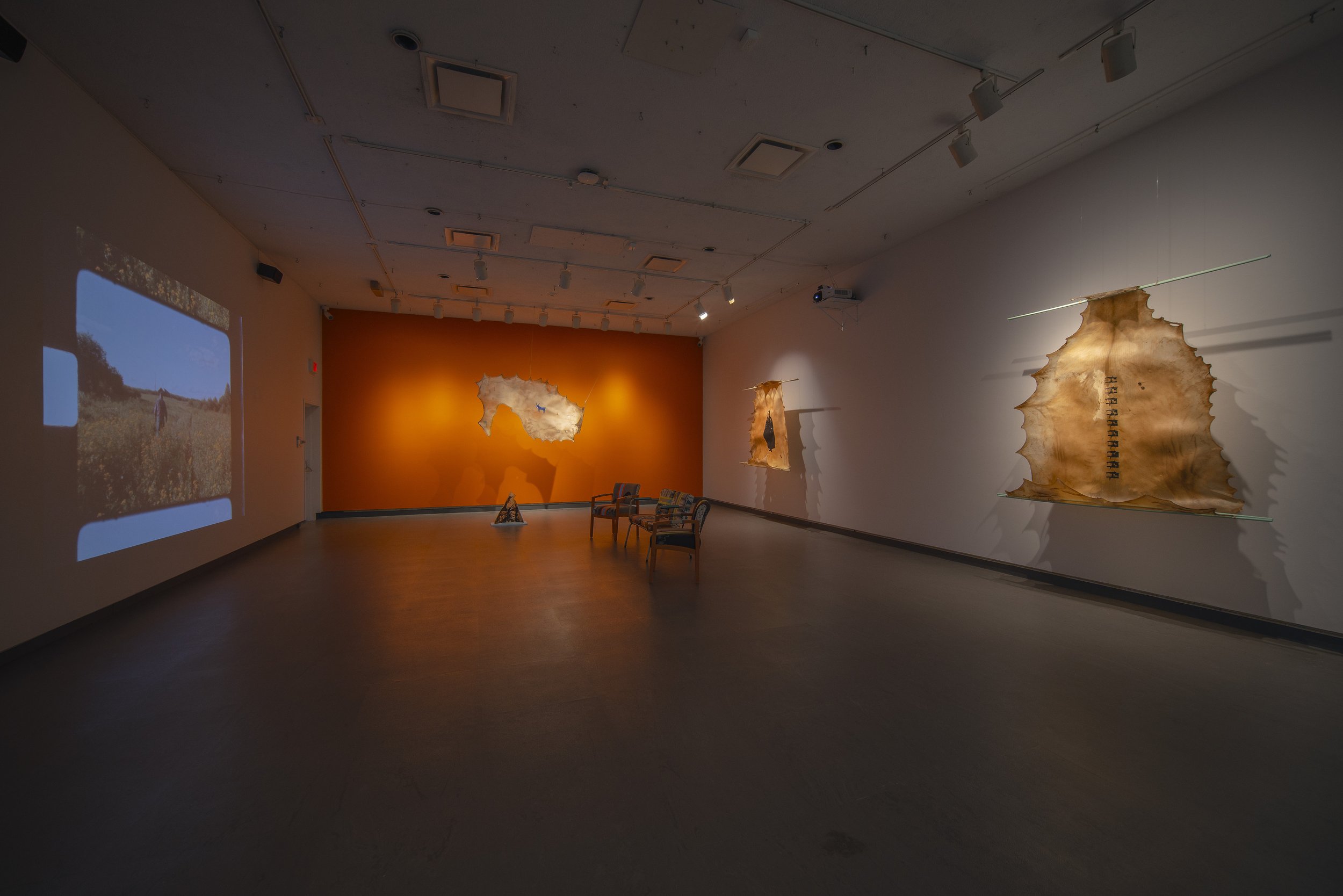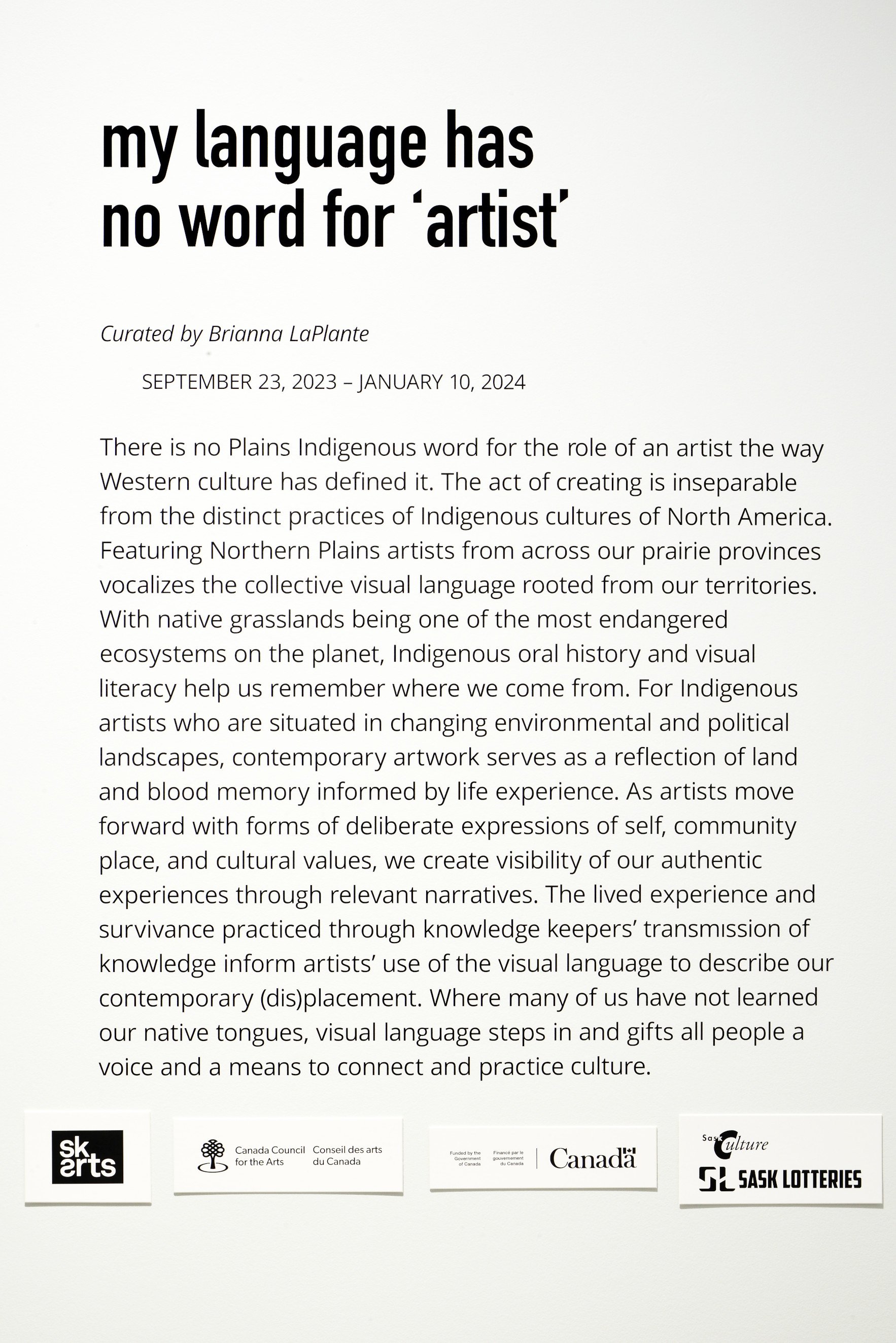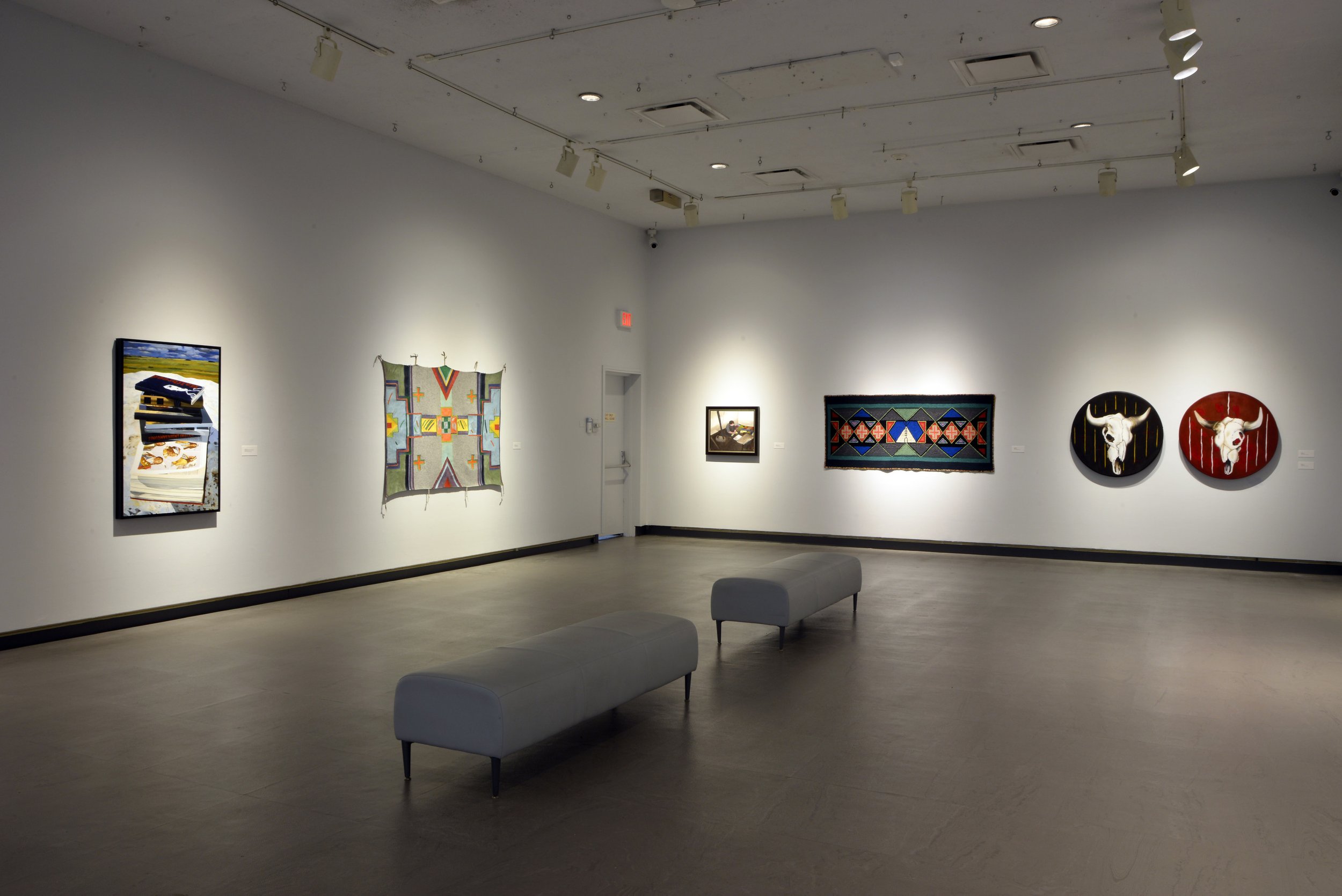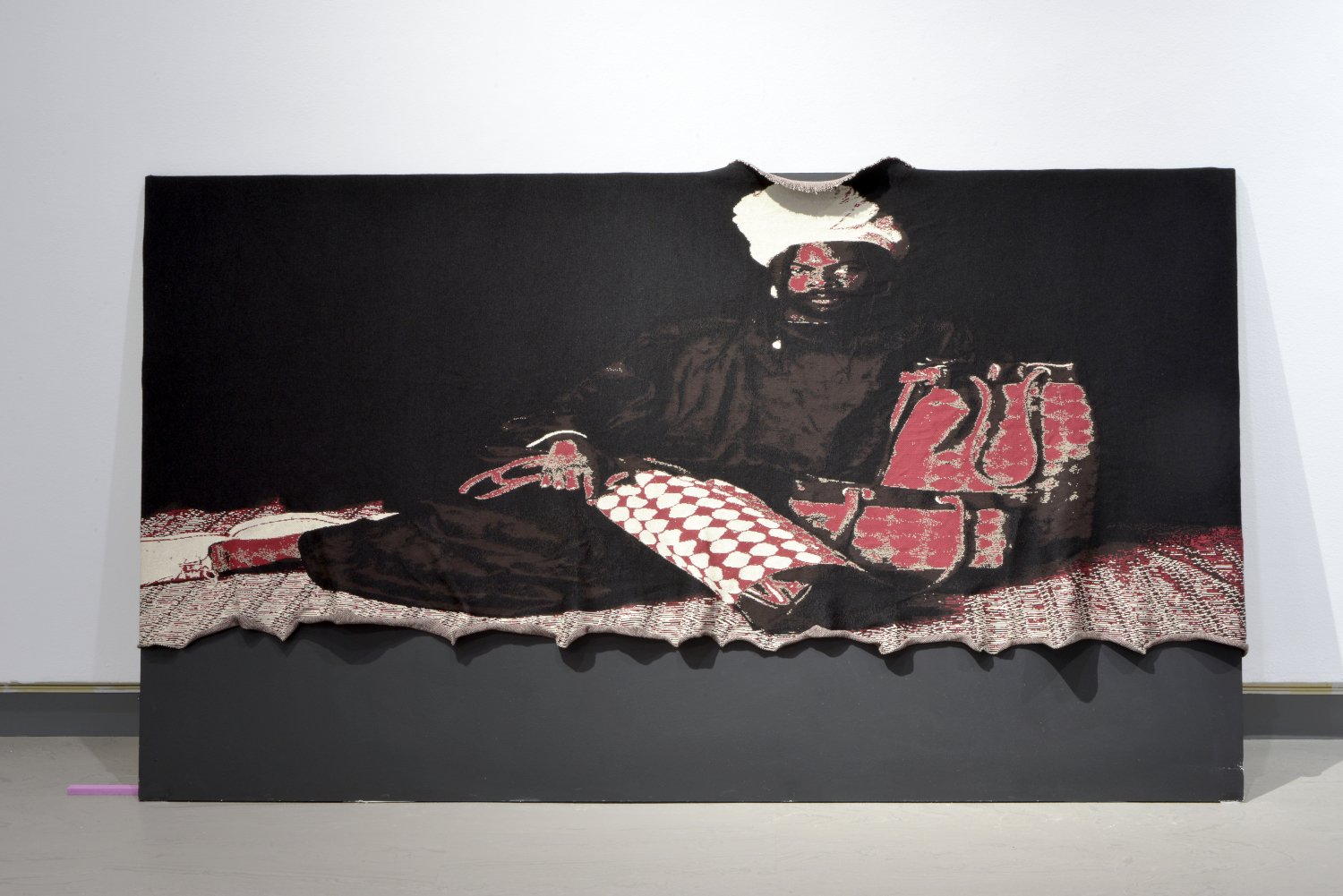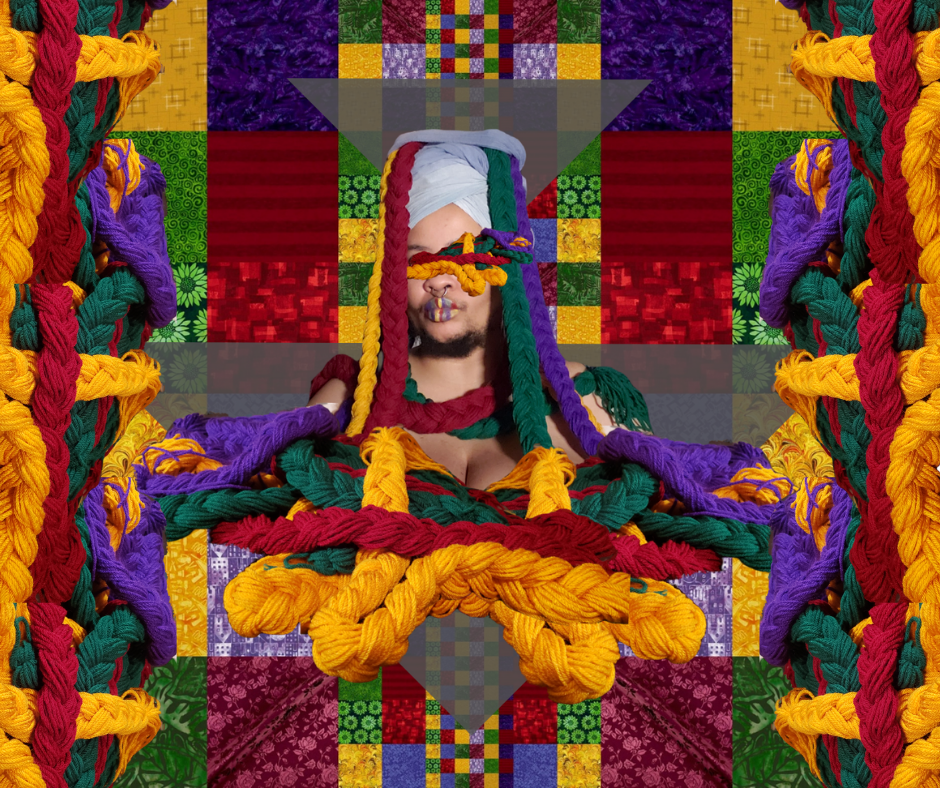
Change is the only constant
Artists Gao Yujie and duo Laura Kavanaugh and Ian Birse (aka Instant Places) transform the gallery into a site for the complex interplay between technology, time-flow , sensory haptics, and human experience. Using visual and sound-based electronic media and traditional art methods, Kavanaugh and Birse explore the reflexive interflow between the body and the machine. Similarly, Gao Yujie questions the perception of time as it is interpreted and manipulated by both humans and the machine. Together the work situates our experience along an expansive continuum defined by the flux of time.
Simultaneously dense and light, still and dynamic, refined and complex, the works embody the running concept that change is the only constant.
* This exhibition changes from time to time.
Essays ↑
Notes on Gao Yujie’s Bees of the Invisible
By Xiaoxuan Huang
2025
Yujie and I often talk about our homes. These conversations take place, of course, away from home. One of her first performances I ever saw involved her using Google Maps to search the distance from “your location” to her hometown in 河南1.
In her PhD thesis, Gao Yujie writes, “Within the framework of my unsettling methodology, I also incorporate Heidegger’s insights on ‘angst.’ It is the fear of the unknown, an uncomfortable zone, a status like not being at home.”2
Each time I read this interpretation of angst it is the last part about home that strikes me. It makes me think about the unheimlich, the casually hortatory utterance “make yourself at home,” and planets in detriment, to name a few things.
Mostly I think about the conditions that make “being at home” a type of “comfort” that is available in different degrees to different people. As Sara Ahmed writes in Phenomenology of Whiteness, “To be comfortable is to be so at ease with one’s environment that it is hard to distinguish where one’s body ends and the world begins […] In other words, whiteness may function as a form of public comfort by allowing bodies to extend into spaces that have already taken their shape.”3
Ahmed’s theories of orientation may not explicitly appear in Yujie’s latest exhibit at the Dunlop Art Gallery, titled Bees of the Invisible, but the space that has been created certainly asks the body of the participant to find new ways of extending into it.
1 Henan Province.
2 Yujie Gao, “Inhabiting Time in Computational Performative Art,” PhD diss., (University of British Columbia, 2023).
3 Sara Ahmed, “A Phenomenology of Whiteness,” Feminist Theory 8, no. 2 (August 2007): 149–68,
https://doi.org/10.1177/1464700107078139, 158.
2018
I found out very late in her life that my 外婆4 wrote poetry. She told me this in 2018, when her memory was already so bad. We were alone in her bedroom, and she recited the poem for me out of nowhere, something about birds flying into the sunset. Even at the time I knew I would regret not recording it.
I remember her voice changed; it had a clarity that only poetry lends to its speakers. It is arresting to witness someone reaching back in time like that. Or maybe it is time that reaches out through them. Her poem was a traditional Chinese couplet written on red rice paper. It was published, as in posted, over the main gate to her ⼩区5, an honour that still showed up decades later as a look of pride on her face.
My 外婆 was not literate, but she had something even better, which was an ear for rhyme and meter. I am also illiterate in Chinese. Whenever I go through customs and immigration, crossing the threshold into Mainland China, I always have to practice writing my name first: 黄晓旋.
2025
I admire the way Yujie’s work always has a poetic heart. She knows how to access a time underneath ordinary clock-time, or what she calls “existing time.” Her art practice uses the theoretical concepts of flow, angst, and wander, the latter also being a method which she describes as a way to “use time and space without a fixed order.”
“I’m working on a ‘magic cloth,’” she writes to me in an e-mail about Bees of the Invisible. “When you draw on it with a water brush, the marks evaporate after about 30 seconds. This idea is inspired by my father, who often practices calligraphy on rice paper using only water.”
Of course a time-scholar should develop an interest in a writing practice that only lasts if the writer keeps on writing. This technology, which vanishes what it prints, disrupts or “unsettles” a culturally logocentric understanding of writing as a valuable tool to preserve, document, and record. What follows from this unsettling is not a return to oration, but instead something less logical, more angsty, and even pre-speech – like a baby who will only sleep when being held in the arms of their parent.
4 (Maternal) grandma.
5 Apartment complex.
It feels significant, too, that the vanishing rice paper prototype allows for practice over perfection. Practice, in other words, that becomes its own form of repetition. While the marks on Mr. Gao’s rice paper disappear, they eventually show up again as the change in his calligraphy.
Such is the hauntology of time – the invisible and constant influence that informs how we are able to be, now.
2018
As I left my 外婆’s apartment, I cut through 鲁迅公园6 and noticed faint, hand-written characters on the ground. First they appeared faded, nearly reclaimed by the sun; as I kept walking they became clearer. The characters led me to the writer, who was a man my father’s age practicing writing calligraphy using water.
Xiaoxuan Huang (she/they) is a writer, scholar, & educator working in hybrid poetics & autotheory. Xiaoxuan holds an MFA from the University of British Columbia (Okanagan Campus.) She currently teaches English Literature & Creative Writing at Capilano University. She is a 1.5 generation Shanghainese-Canadian who is living on the traditional and unceded territory of the xʷməθkʷəyəm (Musqueam), Sḵwx̱wú7mesh (Squamish), and Səlílwətaʔ/Selilwitulh (Tsleil-Waututh) people.
Bibliography
Ahmed, Sara. “A Phenomenology of Whiteness.” Feminist Theory 8, no. 2 (August 2007): 149–
68. https://doi.org/10.1177/1464700107078139.
Gao, Yujie. “Inhabiting Time in Computational Performative Art,” PhD diss. University of British Columbia, 2023.
6 Luxun Park.
Change is the only constant
By Dr. Jessica Argo, Glasgow, 13 May 2025
Ian Birse and Laura Kavanaugh, in their artist collective Instant Places, have an uncanny ability to construct a collective and boundary-dissolving art space - often transcending the walls and floors of the white cube physical architecture of a gallery; or the stage/seats boundary of black box theatres/ concert halls. They do this by composing and digitally painting generative sound and images that are ephemerally conjured like alchemic, glitching smoke - building custom programming software and blasting these into liminal web platforms (seen in “As the crow flies: a GIO Global commissioned film”, Jessica Evelyn Argo, 2023). Instant Places have pioneered this form of New Media art since the turn of the millennium (Instant Places, 2025), but more recently Glasgow Improvisers Orchestra have been privileged to see Ian and Laura put themselves in the frame, over ZOOM teleconferencing software in the Theatre of Home project that began in 2020, upon the international COVID-19 lockdowns (MacDonald, Denora, Sappho, Burke, Birrell 2025). Over ZOOM, Ian and Laura’s faces peered through their musical laboratory apparatus, ducking under spaghetti of modular synth patches and bricolage objects bounced of a tabletop guitar, whispering chopped languages into the zoomesphere. These scenes were dappled with their wraparound, kaleidoscopic glitch art, as if they were in a non-Euclidian stained-glass cathedral (Segerman 2017) or Bjork’s ambisonic soundscapes and vapor-like dancing projection screens in Cornucopia (d&b audiotechnik, 2020).
Now, in Dunlop Art Gallery, Instant Places print this practice into a physical gallery space (also refracted off Yujie Gao’s work, Bees of the Invisible.
The visitor is first “greeted” by a wall-sized snapshot – a still image that has been grabbed from a constantly flitting array of colour spectra in Instant Places’ video work – a non-representational picture fixed in time, and affixed to a wall.
Birse and Kavanaugh set up a tension (or a mirror) between fixing versus movement in Change is the only constant - Hand drawn painting on paper, versus generative video software on digital screens, or sound only improvisation.
Fixing/inferred movement
In the physical gallery space, there are fixed works on paper but the viewer can still tangibly perceive movement in these objects - the act of crumpling and bending paper inscribed with hand-drawn, improvisatory abstract-expressionist mark-making in rave-reminiscent neon colours, translates the sense of swarming, collapsing, expanding, stretching and dissolving the video canvas that is splattered with the artists’ digital brushstrokes in their internet works (where the paintbrush is digital code).
On these fixed works on paper, past movement is inferred – the audience imagine Birse and Kavanaugh pushing, dragging, or dancing the paintbrushes across the surface of the paper, transcribing their choreography over time, across the dimensions of space, leaving a trace of their gesture.
Future movement is also inferred. The paper works are charged with the potential to stimulate musical energy, evoking the unspooling of an 1880s piano roll with holes punched to trigger piano keys - perhaps even the scrawling of a prehistoric cave painting thought to be a “prehistoric voiceprint” (Hendy, 2013). Graphic scores created by bending painting/drawings into cylinders range across two long shelves placed at eye level, giving visitors the impression of images mapped on urn-like forms that appear to expand and float across their field of vision. The 12-foot length of the shelves that hold the scores suggests the potential to play these forms in music that unfolds over time – an interplay of physical space and temporal space. The artists are both folding space, and folding time (Argo 2022).
Kavanaugh and Birse have opted to span/sprawl paintings on paper across the floor, rather than pinning them to a wall or hanging a framed canvas. This might be a reference to the artists’ collaborations with dancers, as they choose to have the brushstrokes leap across the horizontal dimension, to be walked among rather than hung or elevated at a distance. This may also be a disruption of the Western sense of the “ocularcentric”, arising since perspectival techniques in Renaissance painting allowed architectural realism and the invention of printing press fixed thoughts in visual, rather than oral communication. This meant that in western cultures sight became the most privileged sense (to “see” is to “know”, or understand), whereas hearing is thought to be more intangible, ghostly, ephemeral even ascribed to diverse knowledges, or indigenous cultures (which colonialism painted as inferior to western culture “lost in time”) (Reichel 2020). Is the act of laying the paintings on the floor a gesture to make the visual forms more sound-like, by disrupting the spatial hierarchies inherent within a gallery space? These crumpled paper works are variable in size, from 8 foot by 4 foot, to 3 foot by 2 foot – almost like the pages ripped out and tossed from a giant’s sketchbook. Given Instant Places’ concern with distributed creativity, graphic scores for improvising musicians and dancers, it may be an artists’ joke, to play with patriarchal notion of the fixed artwork being drawn from divine, god-like author-genius (Barthes, 1968).
Movement/mediation
A gallery visitor views their audio-visual compositions 'Meteor Music' on a digital monitor and listens with headphones that allow immersive connections to the accompanying soundscape. QR codes in the space take visitors via an iPad to an evolving collection of online artworks called Underground Comet, a labyrinth of virtual “rooms” that host Instant Places streaming performances, generative audio-visual environments, and Meteor Music animations. QR postcards in the gallery serve as take-away souvenirs that hold the key to enter this virtual artworld.
On May 31st, the exhibition is launched by an ephemeral, improvised sound performance, in an intimate space room separate from all these artworks – where the audience will tune into Kavanaugh and Birse’s sonic imagination.
The content of the exhibition will be constantly changing, as Kavanaugh and Birse continually edit and transmit the code for the generative audio visuals, and mail new hand-made paper works from their studio in Edmonton, disrupting the “object permanence” often inherent in a physical gallery exhibition. Object permanence is most often understood to be a human relational understanding in psychological attachment theories (the ability to recognise objects continue to exist even when not seen, or heard) (Piaget 1954). However, in Change is the only constant, Instant Places subvert the notion of the fixed commodity of paintings or sculptures in the art world, whilst injecting the ephemerality of generative audio-visual internet media, hinting at distributed creativity, movement, and connection of audiences to the work whether, physically in the gallery or remotely via internet. The distance between artwork and audiences can be annihilated, through telematic transmission. George E Lewis adapts Einstein’s theories of quantum entanglement, when he calls it “spooky inter-action at a distance” (Jessica Evelyn Argo 2022).
Jessica Argo (she/her) is a Programme Leader for DDes Sound for Moving at the School of Innovation & Technology at The Glascow School of Art.
References
Barthes, R. (1977). The Death of the Author (1968) (Trans S. Heath). In Image Music Text (pp. 142-148). Fontana Press.
d&b audiotechnik, 2020. Björk’s Cornucopia. d&b On location [video online] Available at: < https://youtu.be/37Oy7WsIBlw?si=5XmpI9QXHcIo8hBj > [Accessed 13 May 2025]
Hendy, D., 2013. Noise a History of Human Listening. London: Profile Books.
Henry Segerman, Non-euclidean virtual reality. 2017 [video online] Available at: < https://youtu.be/ztsi0CLxmjw?si=-oEEkoE2J0xuCeCg > [Accessed 13 May 2025]
Instant Places, 2025. Instant Places CV [online] Available at: < https://instantplaces.ca/cv/instantplaces-cv-200530-2.html > Accessed 13 May 2025)
Jessica Evelyn Argo, 2023. As the crow flies: a GIO Global commissioned film from Instant Places Laura Kavanaugh and Ian Birse [video online] Available at: < https://youtu.be/LIOK9DfCR3Y?si=wfFQyqMq2eMf4_V_ > [Accessed 13 May 2025]
Jessica Evelyn Argo, 2022. Folding Space Folding Time Live Recording. [video online] Available at: < https://youtu.be/8uxYMoqV0u4?si=KOuf3FMW4FqagJdb > [Accessed 13 May 2025]
Jessica Evelyn Argo, 2022. Q and A for Hybrid Piece GIOFest XVI 2024 with George E Lewis . [video online] Available at: < https://youtu.be/MpqTdZb72eo?si=BjrKrtIWQrReiaP8 > [Accessed 13 May 2025]
Piaget, J. (1954). The construction of reality in the child. (M. Cook, Trans.). Basic Books/Hachette Book Group. https://doi.org/10.1037/11168-000
MacDonald, R. A. R., Denora, T., Sappho, M., Burke, R., Birrell, R., 2025. New Directions in Musical Collaborative Creativity: The Glasgow Improvisers Orchestra and the Theater of Home. Oxford: Oxford University Press.
Reichel, A. Elisabeth, 2020. “Sonic Others in Early Sound Studies and the Poetry of Edward Sapir: A Salvage Operation.” JAAAS: Journal of the Austrian Association for American Studies 1, no. 2 (2020): 303–315, DOI: 10.47060/jaaas.v1i2.57
Artists ↑
Images ↑
Photos by Don Hall



























Media ↑























































































